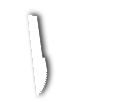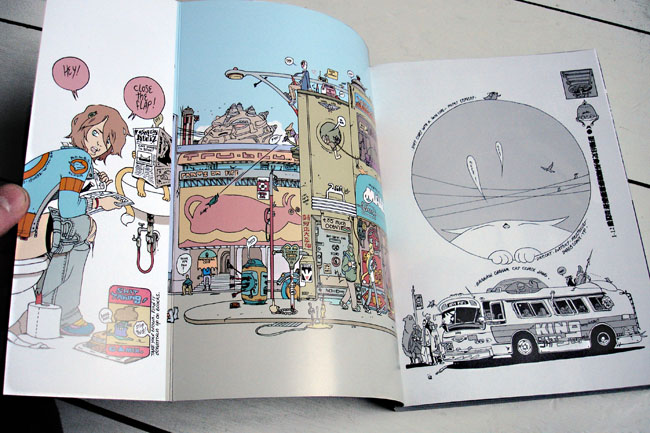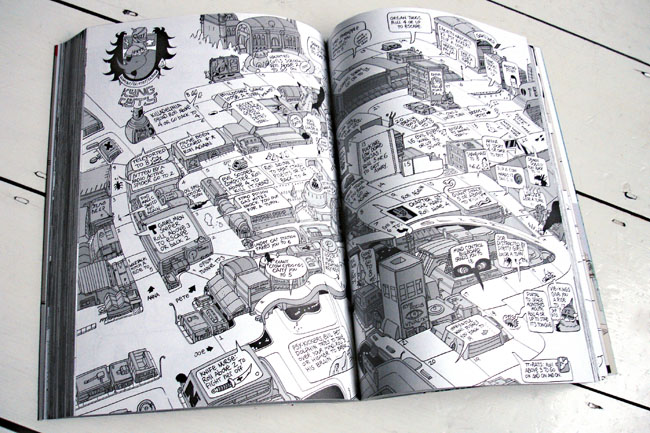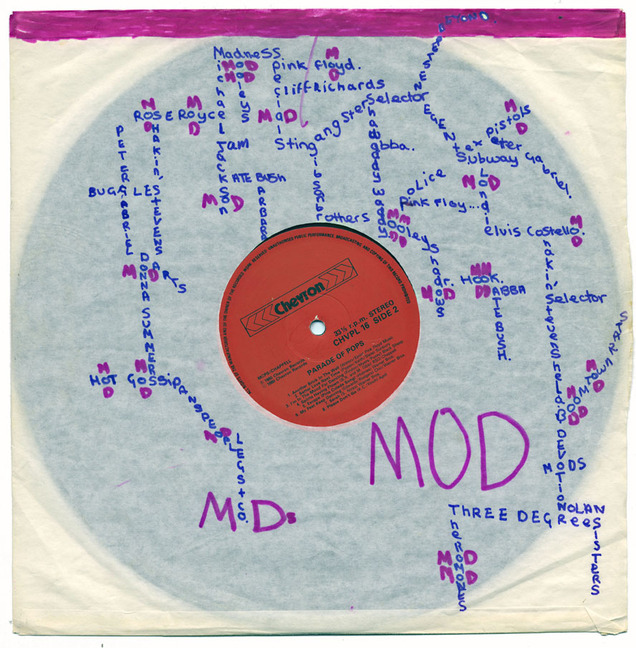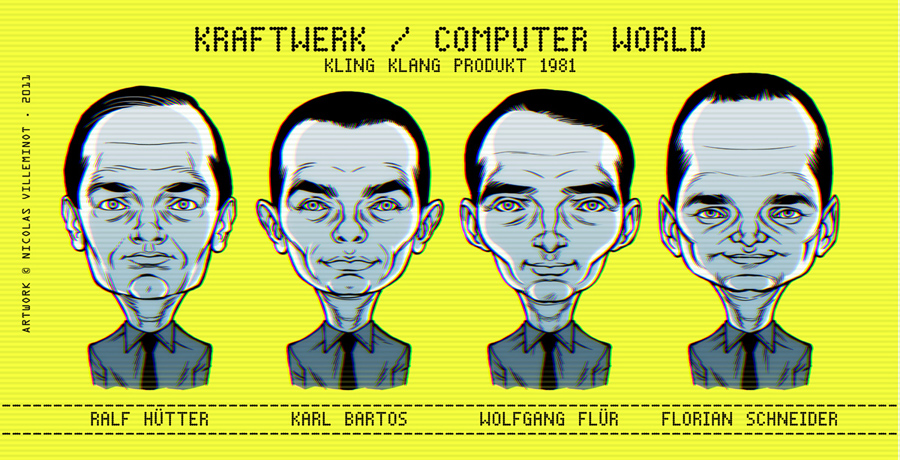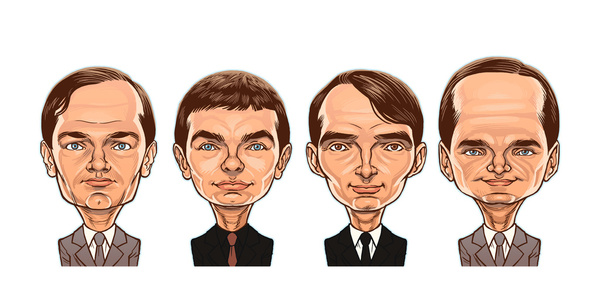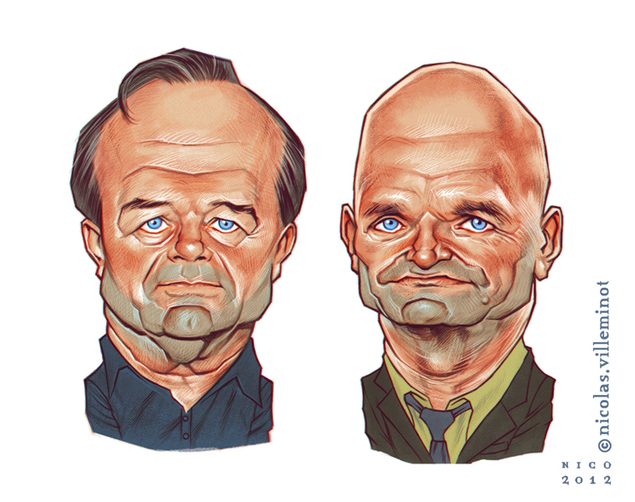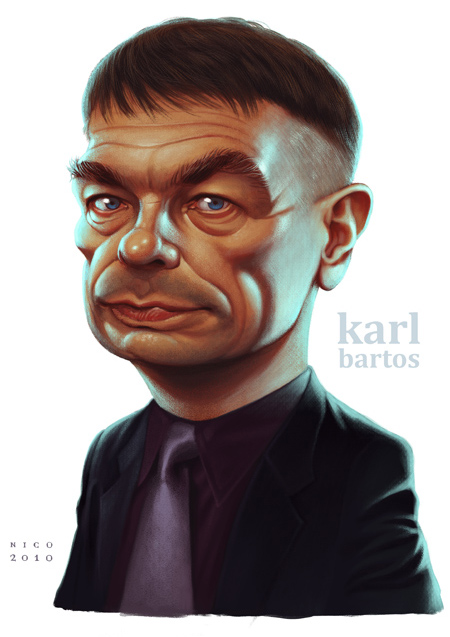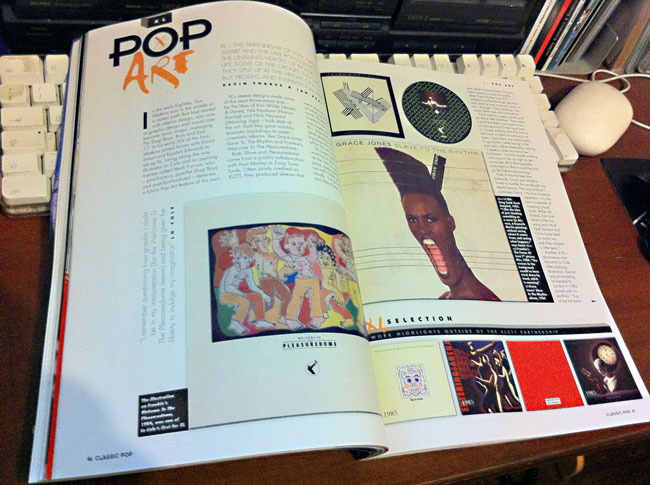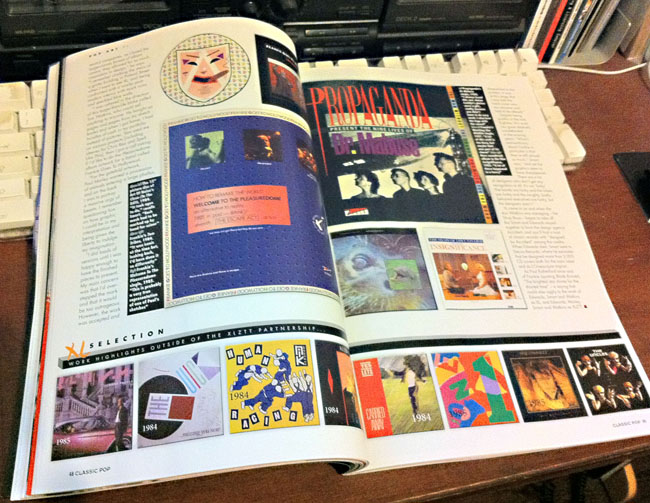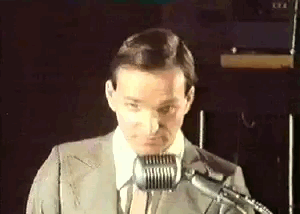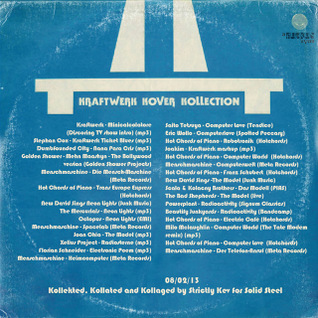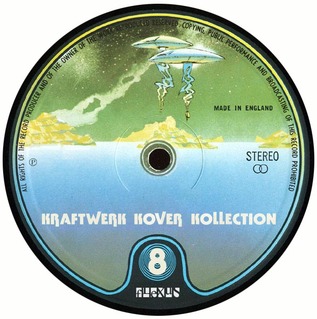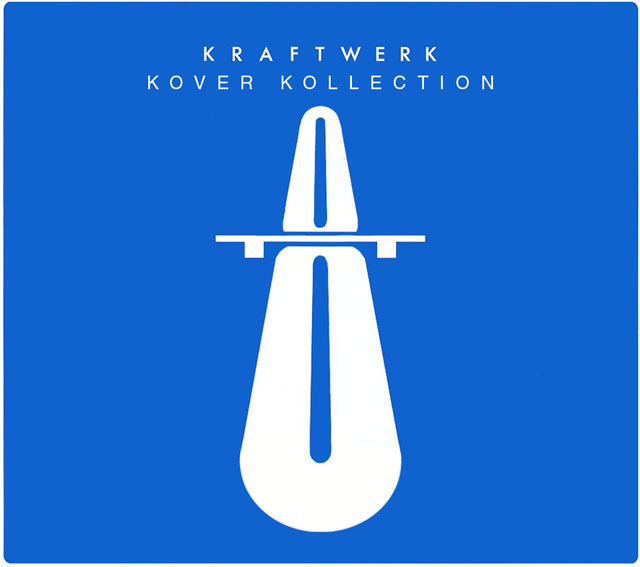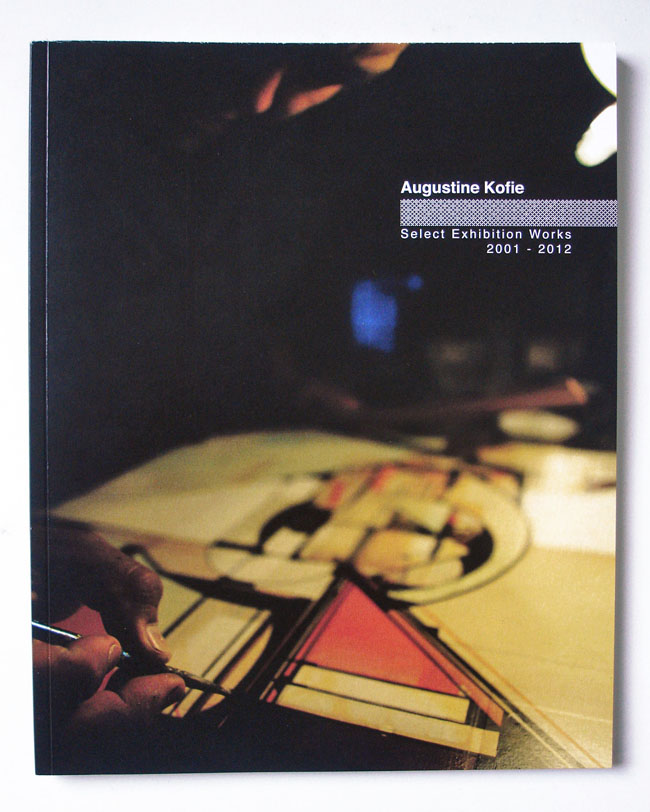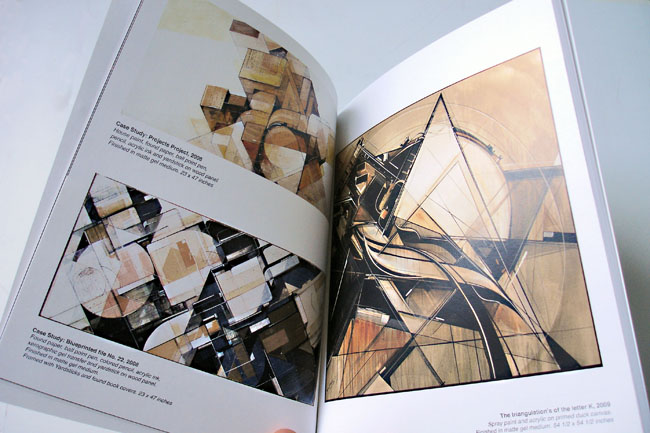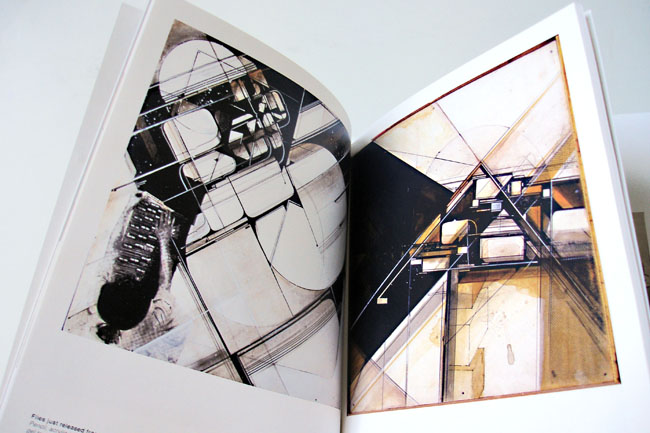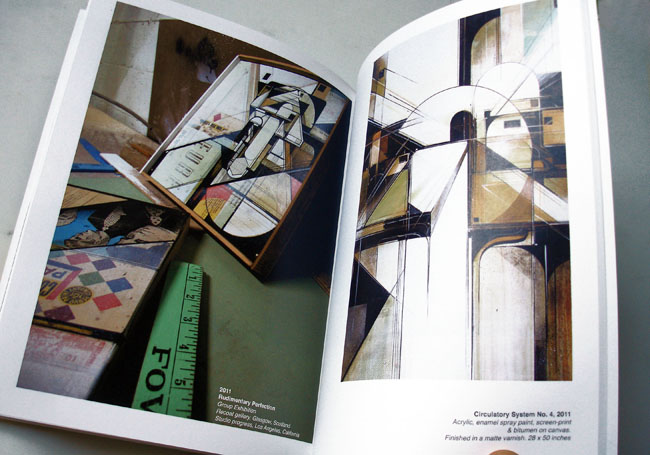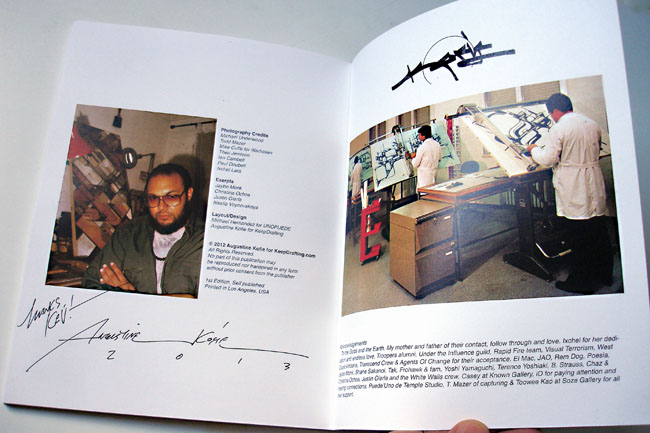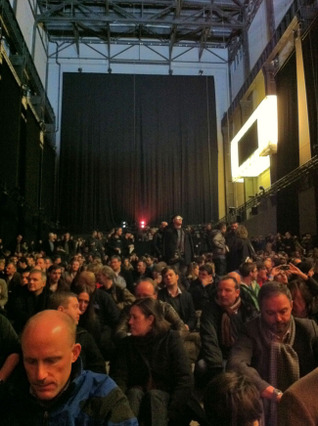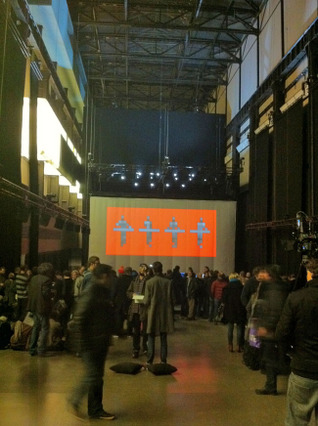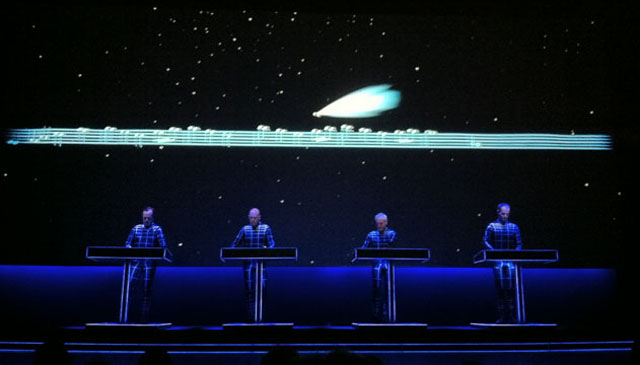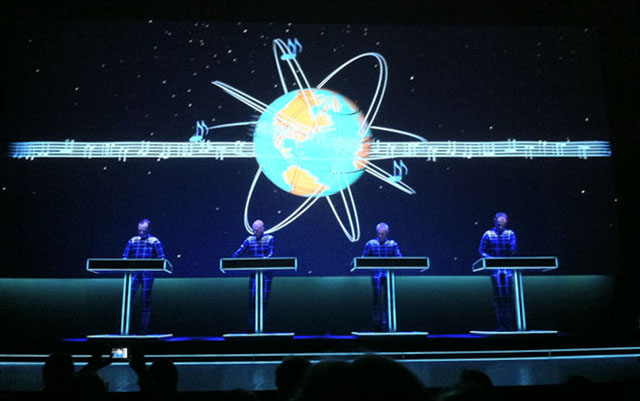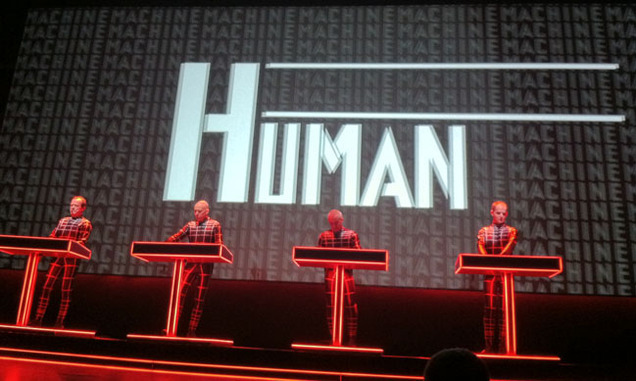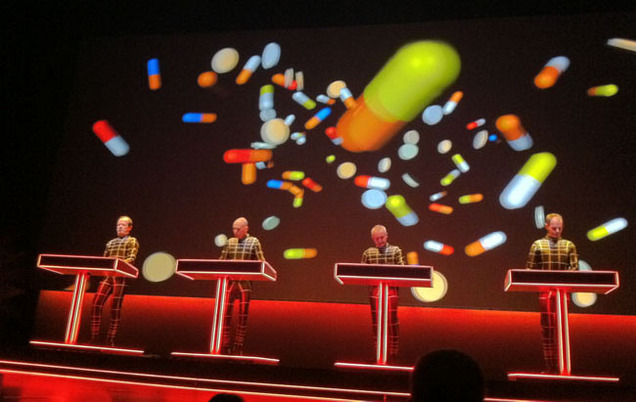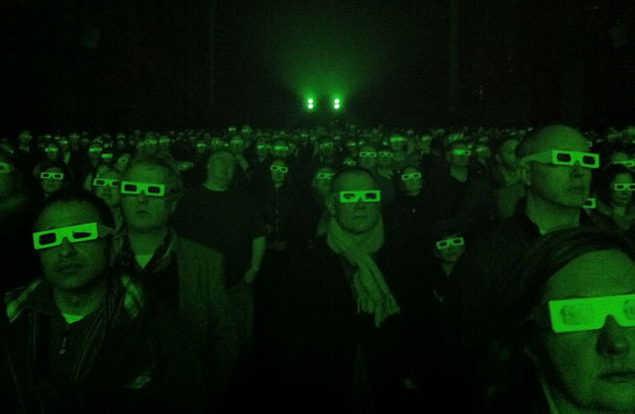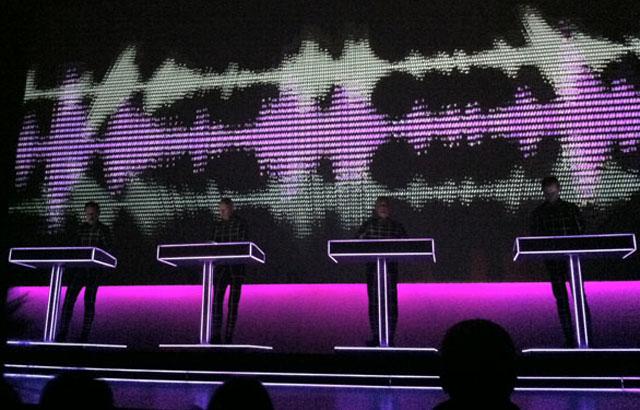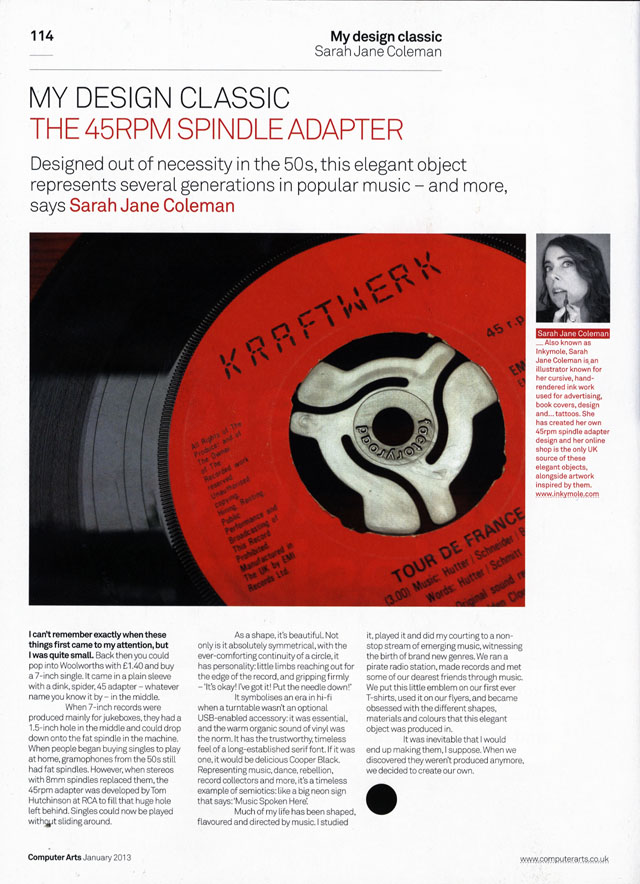
Various oddities clipped from vintage comics past: ‘Cassette Adventures’ – don’t remember these? ‘This Could Be Your Head’ – hmmmm, indeed. Some great original Star Wars toys ads, love the way they’re already billing it as, ‘the greatest movie of all time’. Check the Spidey-warns-against-sexual-abuse ad! Love the design of the Timewarp logo and the spread of vehicles on the ‘Vrrroooooomm’ ad.

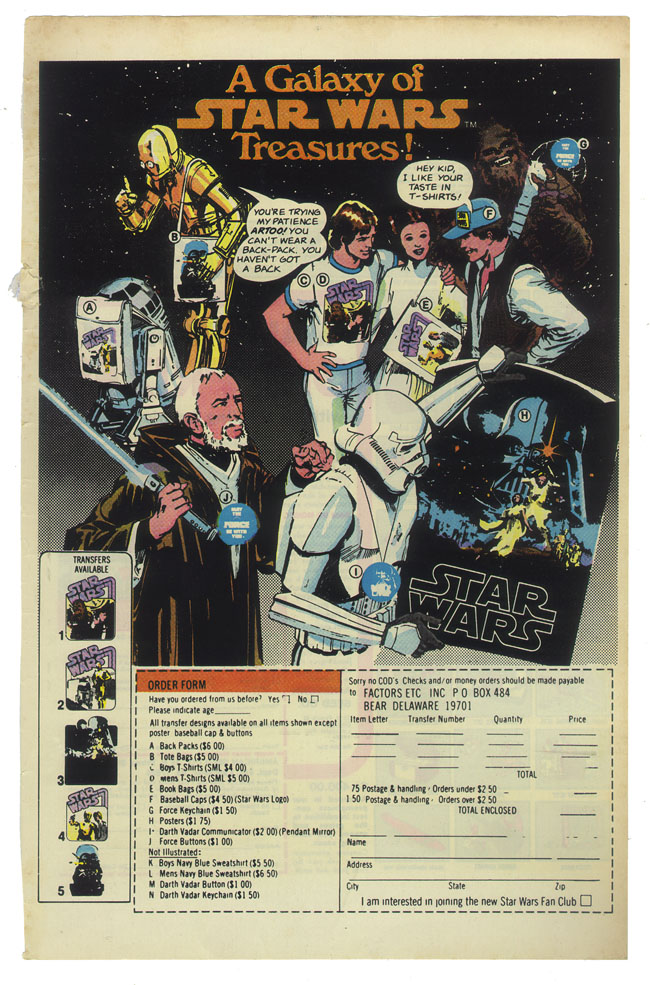

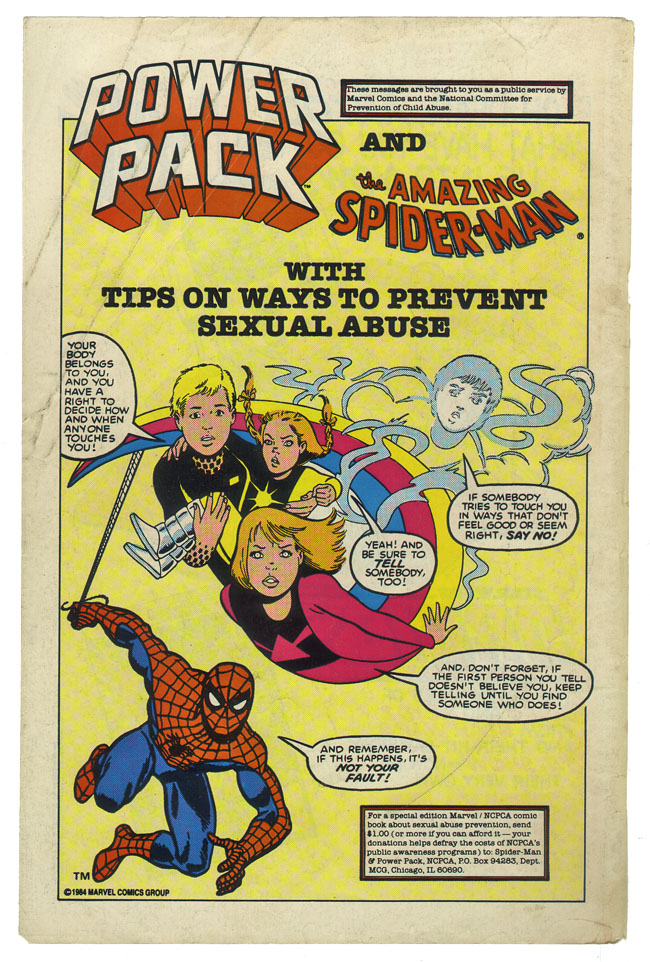
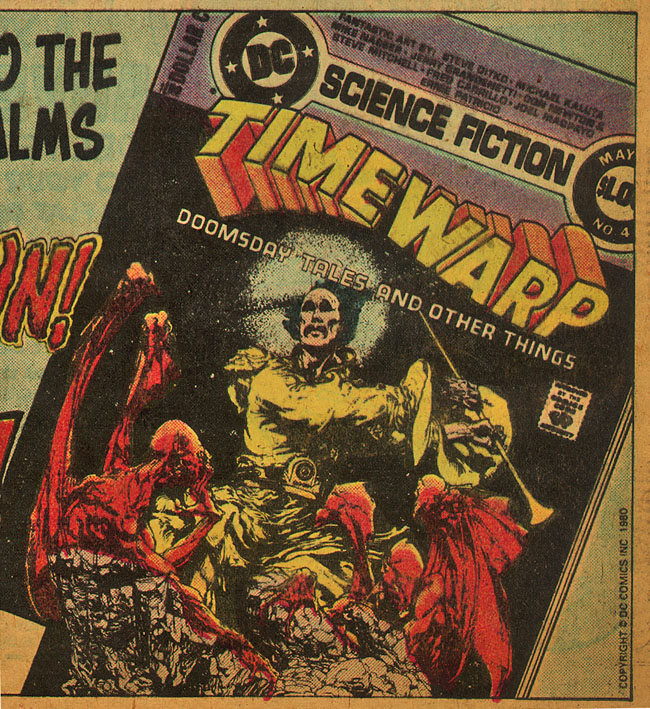

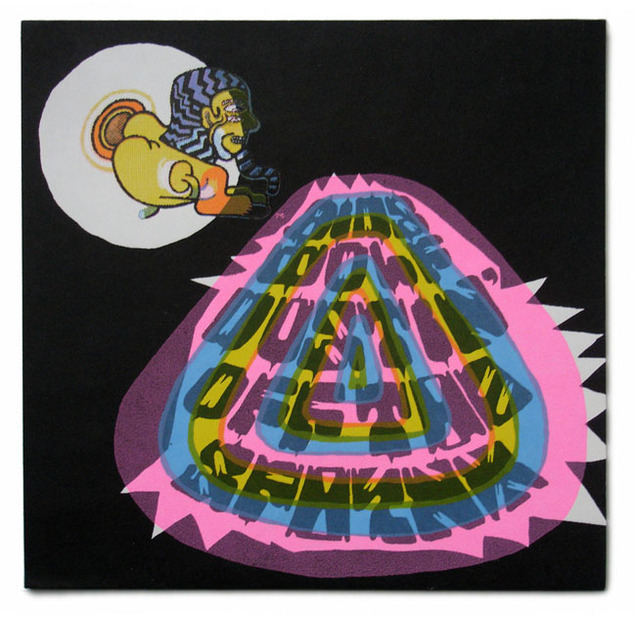
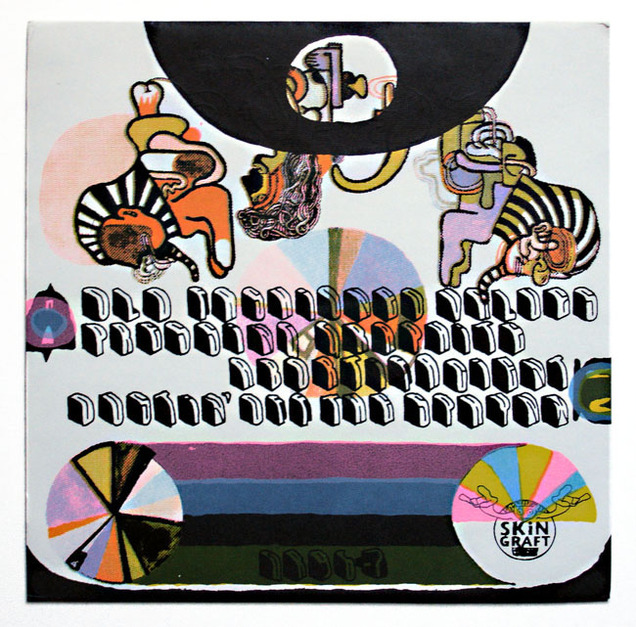
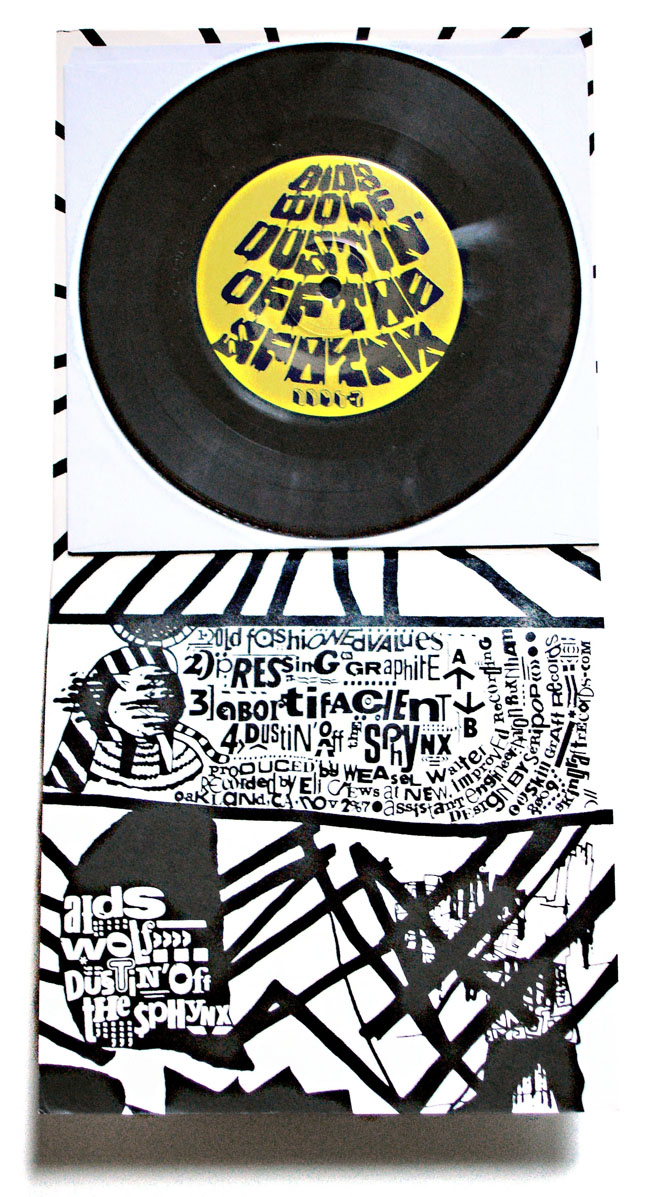
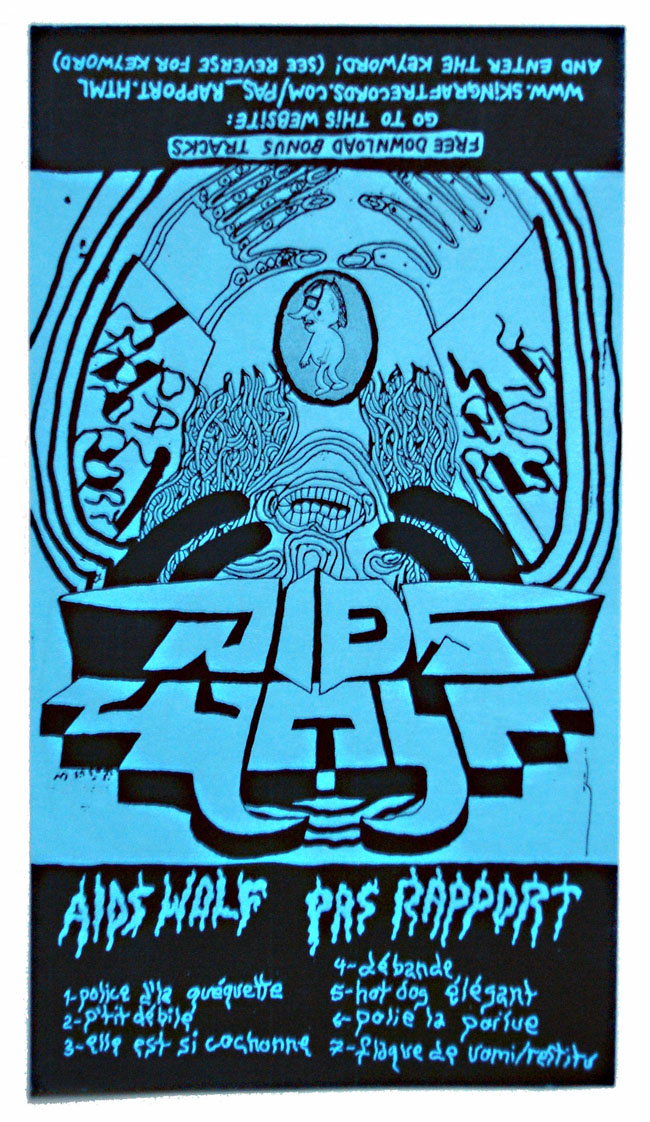
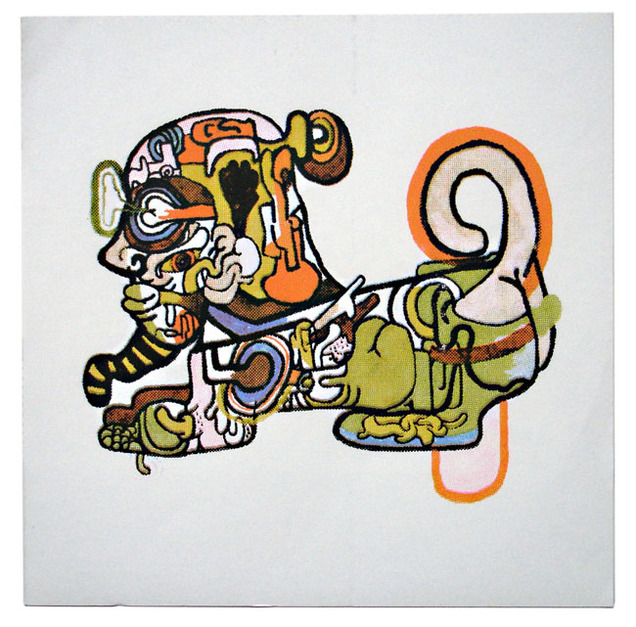
 Aids Wolf – Dustin’ Off The Sphynx – 7″ with fold-out screen-printed cover, insert and tape inlay flyer, Skin Graft Records, 2009. Bargain bin find.
Aids Wolf – Dustin’ Off The Sphynx – 7″ with fold-out screen-printed cover, insert and tape inlay flyer, Skin Graft Records, 2009. Bargain bin find.
*I’ve decided to start a new offshoot of the Artifacts section just for records called Record Roulette. Increasingly I find myself buying records for their sleeves or packaging, regardless of the music, most of which I don’t know until I get them home. RR will be a showcase for these finds with Artifacts for all the other non-vinyl bits and bobs.
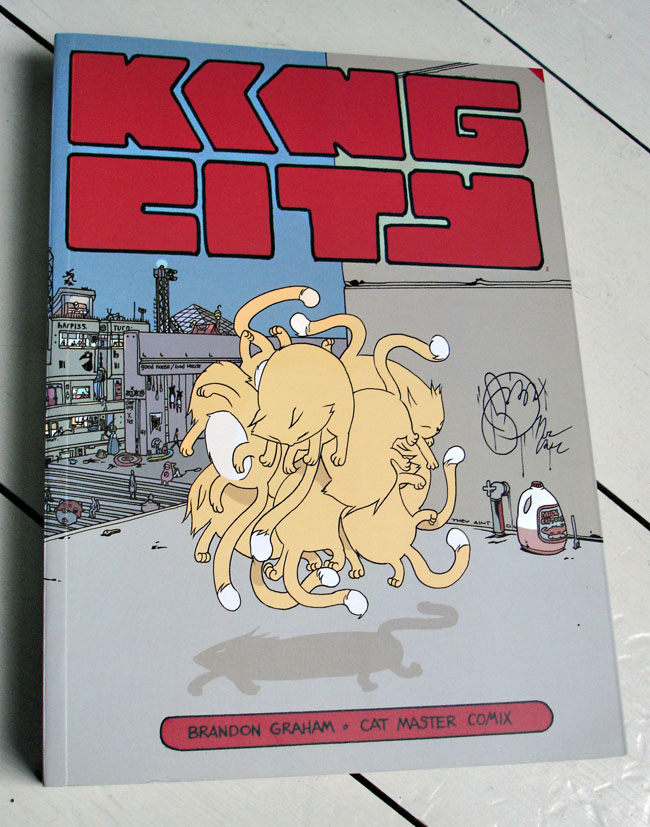 I’ve just finished reading this – King City by Brandon Graham – and it’s the best £15 I’ve spent on a book in a while. Graham’s style is a mix of Manga, sci-fi and playful punning gone mad. There are more ideas nestling in one page of Graham’s work than in some whole comic strips, he seems to shed them ten to the dozen, not only in the story narrative but also in the background details, graffiti and incidental characters who just so happen to be sharing a panel at any given moment.
I’ve just finished reading this – King City by Brandon Graham – and it’s the best £15 I’ve spent on a book in a while. Graham’s style is a mix of Manga, sci-fi and playful punning gone mad. There are more ideas nestling in one page of Graham’s work than in some whole comic strips, he seems to shed them ten to the dozen, not only in the story narrative but also in the background details, graffiti and incidental characters who just so happen to be sharing a panel at any given moment.
King City is about a cat master called Joe, a cat master being someone trained to use their personal cat in any number of incredible ways in any number of different situations. He’s an expert lock-picker who gets coerced into secret missions by Beebay, the mysterious leader of the street gang, the Owls. He’s also pining for his ex-girlfriend, Anna, who has her own story going on across town involving a new boyfriend who’s addiction to chalk is slowly destroying him. Joe also hangs out with his best friend, Pete, who goes on similar covert missions in a range of masks and has his own problems. The stories intertwine but also meander along, taking breaks to flashback to events past or just take time out for incidental scenes that flesh out the characters or the city.
This is really just the tip of the iceberg though, what you get is a sense of a fully formed world that will be rewarded by repeated reads and could be infinitely expanded outside of these characters. As well as the wealth of detail in the city streets it occasionally throws up a crossword, a join the dots panel or a full double page game spread complete with cut out characters. Graham’s style is unique to me although I’m guessing that if I was well read in the Manga department then I would be able to draw some frames of reference. The overall tone feels like a perfect composite of American, Asian and Alien (is that a triple A rating?) and it’s truly a breath of fresh air, much the same as his ongoing sci-fi series, Prophet, which similarly blew my mind last year.
King City is a lighter affair though, similar to his recent Multiple Warheads 4-issue run for Image, largely due to being shot through with punning wordplay in almost every panel (seriously, if you find puns the lowest form of wit then stay away). Once you get used to the way he structures things though it’s a definite page turner and, weighing in at over 400 pages, you definitely get your money’s worth with all the original single issue covers, back up stories and such to add to the mix.
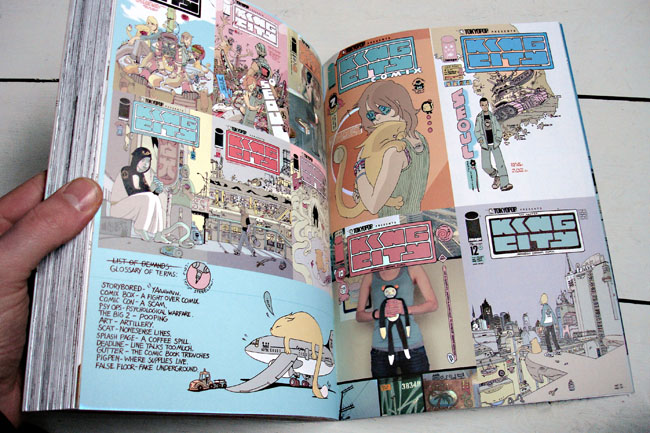
For me the weirdest thing about King City is that I hadn’t ever seen or heard of it on my regular trips to comic shops before. This is so up my street but until last year when the collection was released it had completely gone under my radar, Had I seen a copy on a shelf it would have immediately been the sort of thing I’d have picked up. Considering the first issue debuted in 2009 and the last in 2010, with this collection arriving nearly a year ago I really need to be a bit more alert.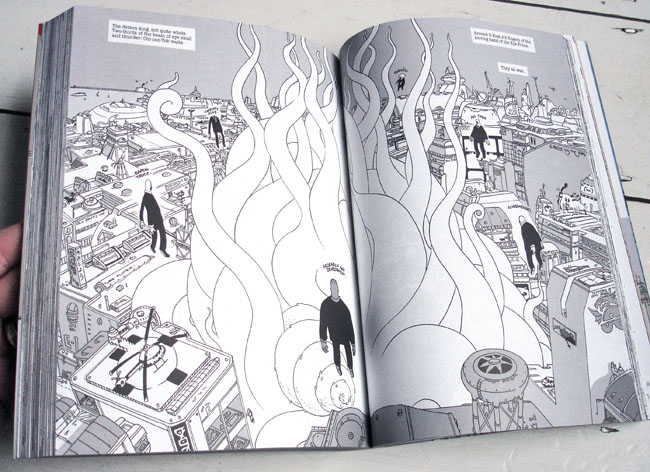
 I’d like to bring your attention to a new blog I’ve set up about the Art of ZTT Records (or ‘Who’s Afraid of the Art of Zang Tuum Tumb’ to give it its full title).
I’d like to bring your attention to a new blog I’ve set up about the Art of ZTT Records (or ‘Who’s Afraid of the Art of Zang Tuum Tumb’ to give it its full title).
For years I’ve been collecting everything I can find from the early 80’s incarnation of this label and tracking down the designers and photographers responsible for some of the artwork. It’s a constant work in progress, starting off as a possible magazine article then progressing to a book idea and now, finally, I’ve decided to make it a website.
Inspired by Paul Gorman‘s rehabilitation of Barney Bubbles‘ work into today’s design community I hope the same can happen for the work of ZTT as it was hugely influential on my own desire to design for the music industry. XL, Accident and The London Design Partnership aren’t exactly household names in the same way as Vaughn Oliver and Peter Saville are but I think that the work they produced for the label in their golden age is at least an equal of the Factory and 4AD portfolios.
The site will eventually feature sleeves, promo posters, print ads, photos, exclusive interviews and associated ephemera connected with the label, its artists and designers. At the very least it should be an exhaustive gallery of an innovative label with a host of rare and forgotten imagery.

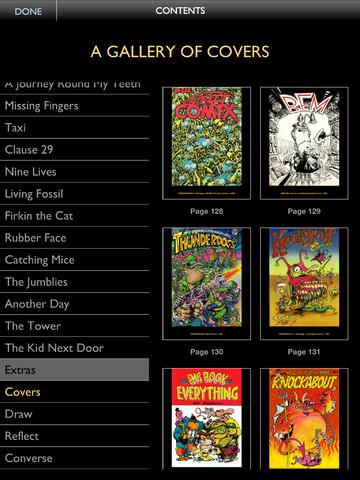 Hunt Emerson was probably the first ‘underground’ cartoonist I discovered. I was kind of aware of Robert Crumb from the Keep On Truckin’ images that did the rounds in the 70’s, Gilbert Shelton‘s Furry Freak Bros. comics were around and I’d been reading Mad magazine for a few years (not really the same league though). In my early teens my family would go shopping in Crawley, a large-ish town South of Gatwick airport, much bigger than the one I grew up in and with a better class of book shops. One such shop had early ‘graphic novels’ – more collections of comic strips back then – and one day in ’84 I found ‘The Big Book of Everything’, an early collection of Hunt’s work.
Hunt Emerson was probably the first ‘underground’ cartoonist I discovered. I was kind of aware of Robert Crumb from the Keep On Truckin’ images that did the rounds in the 70’s, Gilbert Shelton‘s Furry Freak Bros. comics were around and I’d been reading Mad magazine for a few years (not really the same league though). In my early teens my family would go shopping in Crawley, a large-ish town South of Gatwick airport, much bigger than the one I grew up in and with a better class of book shops. One such shop had early ‘graphic novels’ – more collections of comic strips back then – and one day in ’84 I found ‘The Big Book of Everything’, an early collection of Hunt’s work.
It was weird, surreal and the style was cartoon-y, like the Whizzer & Chips, Buster and Cheeky comics I’d read years back. But the humour was adult in places, definitely not for kids. The backgrounds changed in each scene and some strips broke the fourth wall and drifted off altogether. I’d never seen anything like it before and I loved it, my nearest frame of reference being Leo Baxendale‘s ‘Willy The Kid’ books which are the missing link between the aforementioned kids comics and Hunt’s work.
It was also the first use of the phrase, ‘comix’ I’d ever seen, thereby alerting me to the fact that there was a difference. I’d go on to find the whole Knockabout line of books from here which then led me to the US equivalent of Zap Comix with Crumb, Shelton, Griffin, Moscoso, Williams and many more. But this was British, pure luck that I found that first, and there was Hunt on the back cover, staring down at me with a cocked eyebrow. Looking back at it now I see Alan Moore wrote the introduction, no big deal at the time as he was still a rising writer, a few years away from making his mark but his northern humour perfectly suited Hunt’s style.
Now there’s a new collection of Emerson’s work, 30 years after the ‘Big Book of Everything’ (96 pages for £3.95), and this one’s available for the iPad via Panel Nine at £2.99 for 200 pages (some mistake there, surely?). ‘The Certified Hunt Emerson’ contains 27 strips, covers, notes and an audio commentary from Hunt plus a panel mode that means you can zoom into each individual panel and read it like that if you wish. If you want an intro to his work, an overview of one of the UK’s premiere underground comic artists with material that would cost you hundreds of pounds to track down then this is a steal. If you like humorous strips that deal with jazz, sex, TV, rabbits, unexplained phenomena, sin, cities, cats and some of the world’s great classics reinterpreted then this is for you.
 P.S. Hunt also did the ‘Beat Girl’ logo for The Beat back in the late 70’s as well as their Go Feet label identity, first LP cover and this little Beat-mobile.
P.S. Hunt also did the ‘Beat Girl’ logo for The Beat back in the late 70’s as well as their Go Feet label identity, first LP cover and this little Beat-mobile.
The Light Surgeons go out on tour this March for a brief stint around the UK before a London show on April 19th – they’ll be performing ‘SuperEverything*’ for the first time in the UK here:
09/03/2013 – WARWICK ARTS CENTRE – COVENTRY
10/03/2013 – COLSTON HALL – BRISTOL
11/03/2013 – STUDIO THEATRE – BRIGHTON DOME
12/03/2013 – THE SAGE – GATESHEAD
19/04/2013 – HACKNEY EMPIRE – LONDON
The ‘SuperEverything*’ performance is a mix of live music, visuals and performance, commissioned by the British Council and created by The Light Surgeons in collaboration with Malaysian artists. Filmed on location across Malaysia, it explores identity, ritual and place using documentary narratives to create an audio-visual portrait of the diverse cultural landscape of Malaysia and how our complex identities are connected.
This is live cinema performance exploded across multiple projections with an electronic score combining traditional South East Asian instruments, western classical compositions and field recordings. I’ve heard so much about this over the last year and finally it’s coming to London. Few do AV as beautifully and intelligently as The Light Surgeons, this will be something to experience and discuss later rather than the usual ‘ooh!, ahh!’ spectacles so many audio-visual shows seem to fall into these days.
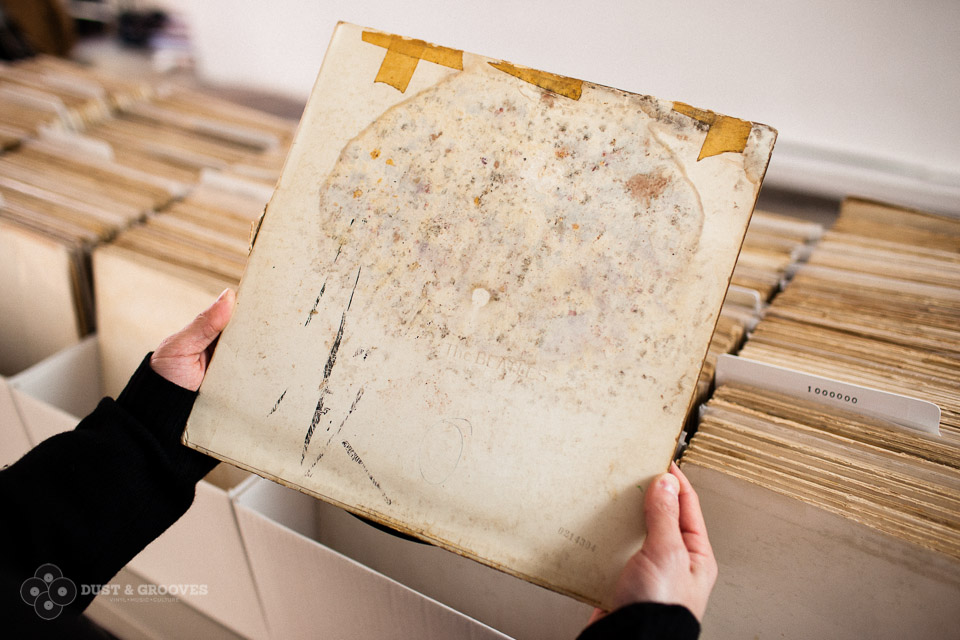
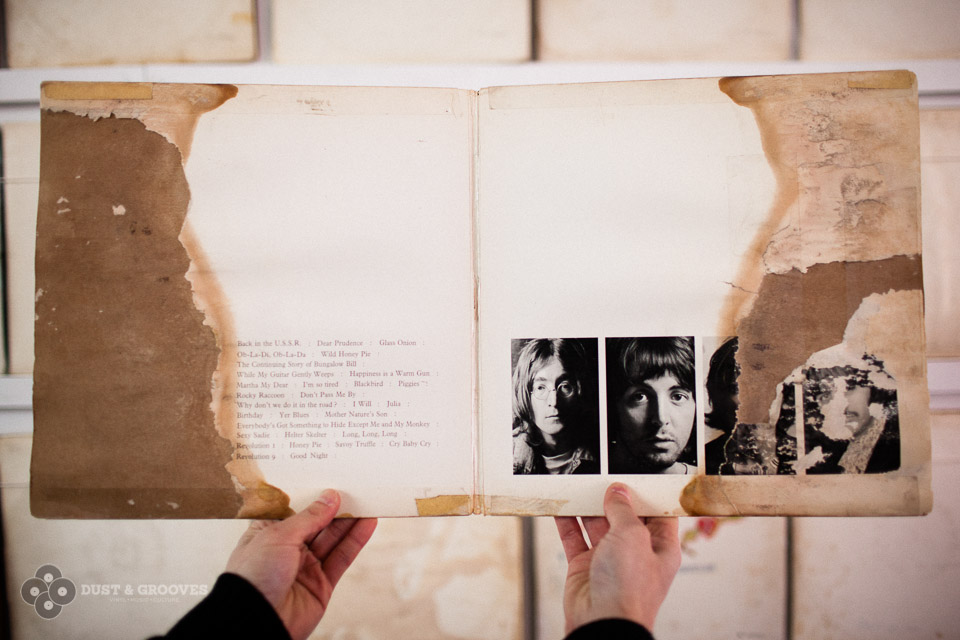
 Over on the Dust & Grooves website (which really is a must if you like vinyl collections of each and every kind) there’s a fascinating feature on Rutherford Chang‘s exhibition of his collection of The Beatles’ ‘White’ album.
Over on the Dust & Grooves website (which really is a must if you like vinyl collections of each and every kind) there’s a fascinating feature on Rutherford Chang‘s exhibition of his collection of The Beatles’ ‘White’ album.
Similarly to Christian Marclay‘s appropriation and customisation of the same album many years ago, Chang has taken it to the next level. He has nearly 700 numbered copies now, all filed in order of issue, and is exhibiting until March at the Recess gallery in New York.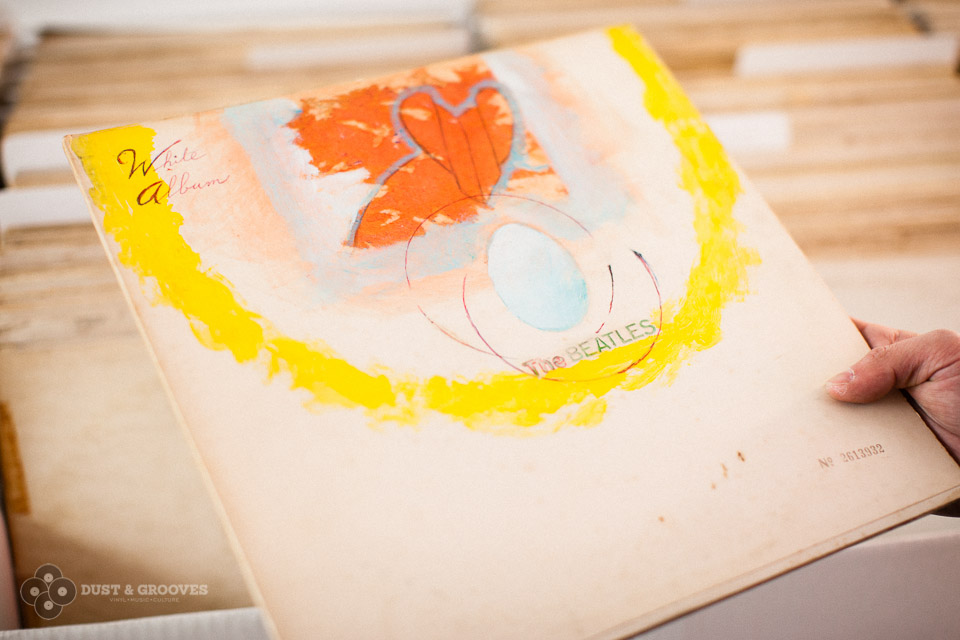
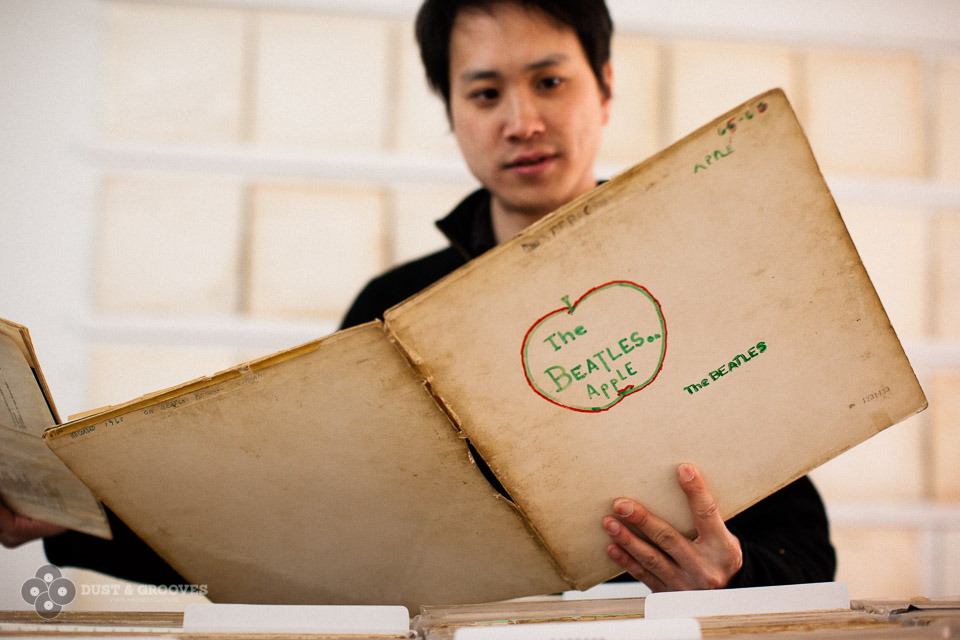
What I love about this is the cultural anthropology side of vinyl collecting, much like Jive Time Records‘ Deface Value or the Bargain Bin Blasphemy blog each sleeve has been customised, sometimes unintentionally, by the previous owner. Vinyl-lovers always talk about the sleeve as a large canvas for artwork and no album is more that than ‘The Beatles’. We’ll never know the hows or whys, only that each copy has now found a new home amongst some of its siblings 45 years later.
For more beautiful images, an interview and a recording of 100 copies of side one of the album playing simultaneously go to Dust & Grooves.
For more on the exhibition:
We Buy White Albums
January 8 – March 9, 2013
Recess, 41 Grand Street, New York
http://www.recessart.org/activities/6753
http://rutherfordchang.com/
The once funny classic Bud ad, made bearable again by Mathias Lachal.
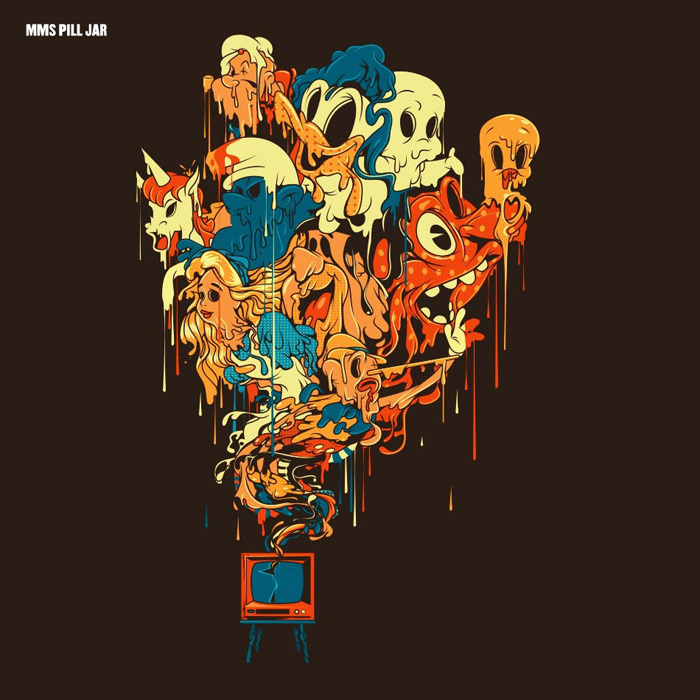 Over on the Rappcats site there’s an 8 track Madlib album to download for free, compiled from his ‘Medicine Show’ albums 1-12. He’s about to embark on an Asian tour (he dropped off one of his 13 CD ‘Bricks‘ in Tokyo today) and here’s the fantastic cover art for the compilation, ‘Pill Jar’.
Over on the Rappcats site there’s an 8 track Madlib album to download for free, compiled from his ‘Medicine Show’ albums 1-12. He’s about to embark on an Asian tour (he dropped off one of his 13 CD ‘Bricks‘ in Tokyo today) and here’s the fantastic cover art for the compilation, ‘Pill Jar’.
The tour starts this Friday and takes in these dates:
Feb. 15: Tokyo with Egon at Sound Museum Vision
Feb. 16: Nagoya at Mago “Audi”
Feb. 17: Osaka at Grand Café
Feb. 21: Beijing at Yugongyishan, Beijing, Dongcheng district, Zhang Zizhong Road 3-2.
Feb. 22: Chengdu at Chengdu East Telecast Hall, East Music park, Jianshezhi Road, Chenghua District.
Feb. 23: Shanghai at The Shelter, 5 Yongfu Road.
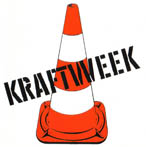 By now, the word is out, there are limited ‘returns’ tickets on the door of the Tate and, if you’re prepared to stand in the cold for an hour or two and queue, you have a good chance of scoring one for the shows left. That’s all well and good if you live in London or can afford a trip on the off chance that you might be lucky. But it’s a poke in the eye for all who can’t and spent the best part of their day on the phone trying to get tickets last December. With this in mind two nights have sprung up so that fans can take matters into their own hands and dictate as if they were the group themselves – ‘tonight Matthew, I’m going to be in… Kraftwerk’.
By now, the word is out, there are limited ‘returns’ tickets on the door of the Tate and, if you’re prepared to stand in the cold for an hour or two and queue, you have a good chance of scoring one for the shows left. That’s all well and good if you live in London or can afford a trip on the off chance that you might be lucky. But it’s a poke in the eye for all who can’t and spent the best part of their day on the phone trying to get tickets last December. With this in mind two nights have sprung up so that fans can take matters into their own hands and dictate as if they were the group themselves – ‘tonight Matthew, I’m going to be in… Kraftwerk’.
The first one takes place on March 1st in Cardiff:
“Eight different live ensembles play the songs of Kraftwerk to ease the disappointment of being unable to get tickets to see them in London.
We couldn’t get tickets either. The touts and scalpers got there first. You could buy a ticket from some disgraceful profiteer, but here’s a more appealing way to enjoy some Kraftwerk.
Live bands of Cardiff musicians, both unknown and well-established, will celebrate Kraftwerk with a night to remember at Chapter Arts Centre.
Bring your own robots.”
The Rules / Application form: here
Tickets: £7/£5 concessions, now on sale at Chapter.
More information: contact us by email or telephone Cardiff 2031 1904.
Twitter: @kraftwerknight
and here’s another that’s sprung up in Glasgow two days later after seeing the Cardiff idea and deciding to do their own version:
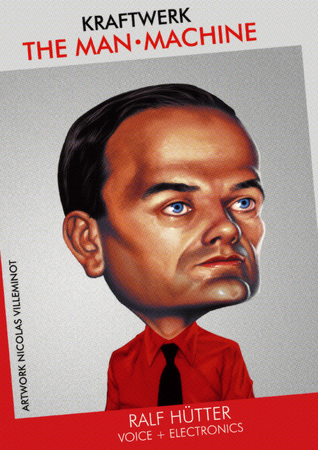
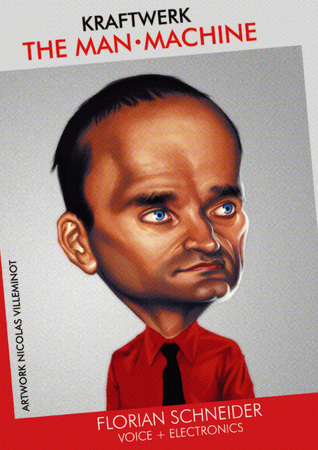
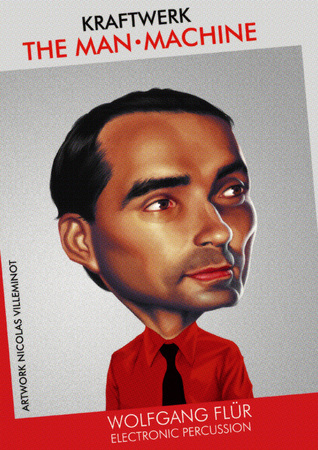
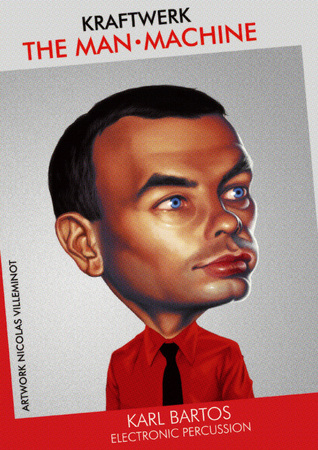
 These brilliant caricatures of Kraftwerk were done by Nicolas Villeminot and feature, among many more, on his Deviant Art page.
These brilliant caricatures of Kraftwerk were done by Nicolas Villeminot and feature, among many more, on his Deviant Art page.
 The piece below was written for Clash Magazine who are running articles during the London concerts Kraftwerk are playing at the Tate Modern. I was among several other artists asked to choose my favourite album of theirs and write about it.
The piece below was written for Clash Magazine who are running articles during the London concerts Kraftwerk are playing at the Tate Modern. I was among several other artists asked to choose my favourite album of theirs and write about it.

Kraftwerk appeared in my life at the beginning of 1982* when ‘The Model’ scored a freak No.1 in the UK during the post-Xmas lull. In the middle of your Gary Numans, Human Leagues and other assorted synth pop of the day were a new band, from Germany this time. Magazines articles featured the four piece with tales of building their own instruments, mannequins on stage and turning calculators into synths. The local record shop also suddenly confronted my 11 year old self with a variety of different back catalogue LPs from this ‘new’ group, re-released to cash in on the sudden interest.
With only limited paper round funds I had to choose which one to buy first and the fluorescent yellow of ‘Computer World’ won the day (on cassette no less, with an equally acid yellow tape inside the case). It couldn’t have been a better choice because whilst ‘The Man Machine’ and ‘Trans Europe Express’ give it a run for its money it’s a scientific fact that there are no duff tracks on CW. It’s an album which starts strong with the urgent intro to ‘Computer World’ and, incredibly, retains that strength and momentum to the dying notes of ‘It’s More Fun To Compute’.
‘Pocket Calculator’ is one of my favourite songs they’ve ever written with the oft-sampled bubbling arpeggios of ‘Home Computer’ coming a close second (alongside its sudden jump-cut to a faster tempo midway). Even the sudden return of ‘Computer World 2’ out of ‘Numbers’ isn’t a cop out, rather it reinforces the overall concept and softens the impact of the melody-less countathon before it. My brother and I used to listen to the eerie blizzard of whispered voices that end side 1 and try to discern what they were saying. To this day I swear there’s a little phrase in there that repeats, “don’t say it so quick”, every so often.
That the group dispensed with minimal verse/chorus/verse/choruses quickly before taking off on an extended ‘jam’, adding layers of melody in strict eight bar measures, was something that was new to me. Having only ‘got’ pop music about two years before, I was unused to songs extending much over the three minute mark – remember this is 1982, the 12″ was still a new format and the idea of extended remixes still largely an underground club thing (and I was only 11!). Here were tracks of 5, 6 and 7 minutes in length, some blending into each other, all sounding like they were played with the precision of a factory car assembly line rather than human beings.
The sounds were gentle too, aside from the stuttering crush of the beat to ‘Numbers’ and the subtle menace of the melody in ‘It’s More Fun To Compute’, the album was most definitely not Rock in any way. Depeche Mode‘s debut, ‘Speak & Spell’ – released the same year as ‘Computer World’ and named after the children’s toy that Kraftwerk utilised on the title track, was about the nearest thing I’d heard to their softly spoken style. Later in ’82 The Human League would release their largely vocal-less League Unlimited Orchestra remix album, ‘Love & Dancing’, and by then I was completely hooked on this kind of synth pop or new wave as it became known. If I had a time machine the first destination on the dial would be one of their gigs supporting this album back in ’81. The classic line up of Ralf, Florian, Karl and Wolfgang, performing their masterpiece, even coming to the front of the stage for ‘Pocket Calculator’, the closest they would ever come to their fans before withdrawing into their own computer world.
*I was actually aware of ‘Autobahn’ in the mid 70’s via a compilation tape my dad made from the Top 40 countdown each Sunday, the track scared me whenever it appeared but I wouldn’t put two and two together until later.
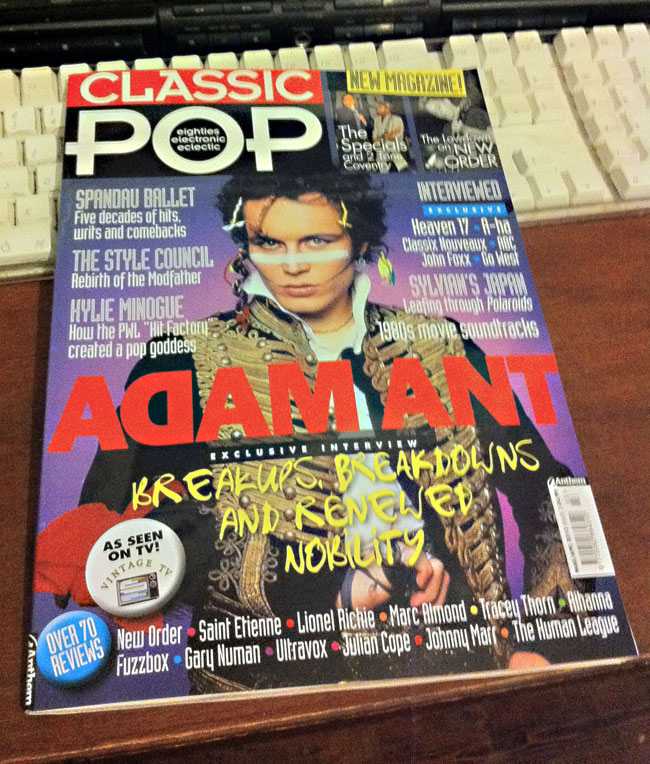 Just out is issue 3 of Classic Pop magazine with a 4 page article I co-wrote with editor Ian Peel about the 80’s music design work of the XL design studio. You don’t hear much about them but they’re a big passion of mine because they largely defined the look of the Zang Tuum Tumb label from 1983 through to the end of the decade, greatly influencing myself in the process.
Just out is issue 3 of Classic Pop magazine with a 4 page article I co-wrote with editor Ian Peel about the 80’s music design work of the XL design studio. You don’t hear much about them but they’re a big passion of mine because they largely defined the look of the Zang Tuum Tumb label from 1983 through to the end of the decade, greatly influencing myself in the process.
Whereas some had Saul Bass, Hipgnosis, Peter Saville or Vaughn Oliver, I had XL who, in conjunction with press officer Paul Morley and another group, The London Design Partnership, created the look of my favourite record label of the 80’s. They did many other sleeves for pop acts on other labels as well but the combination of their work with design briefs from Morley (collectively XLZTT) really stands out from the pack and it’s this that we focus on.
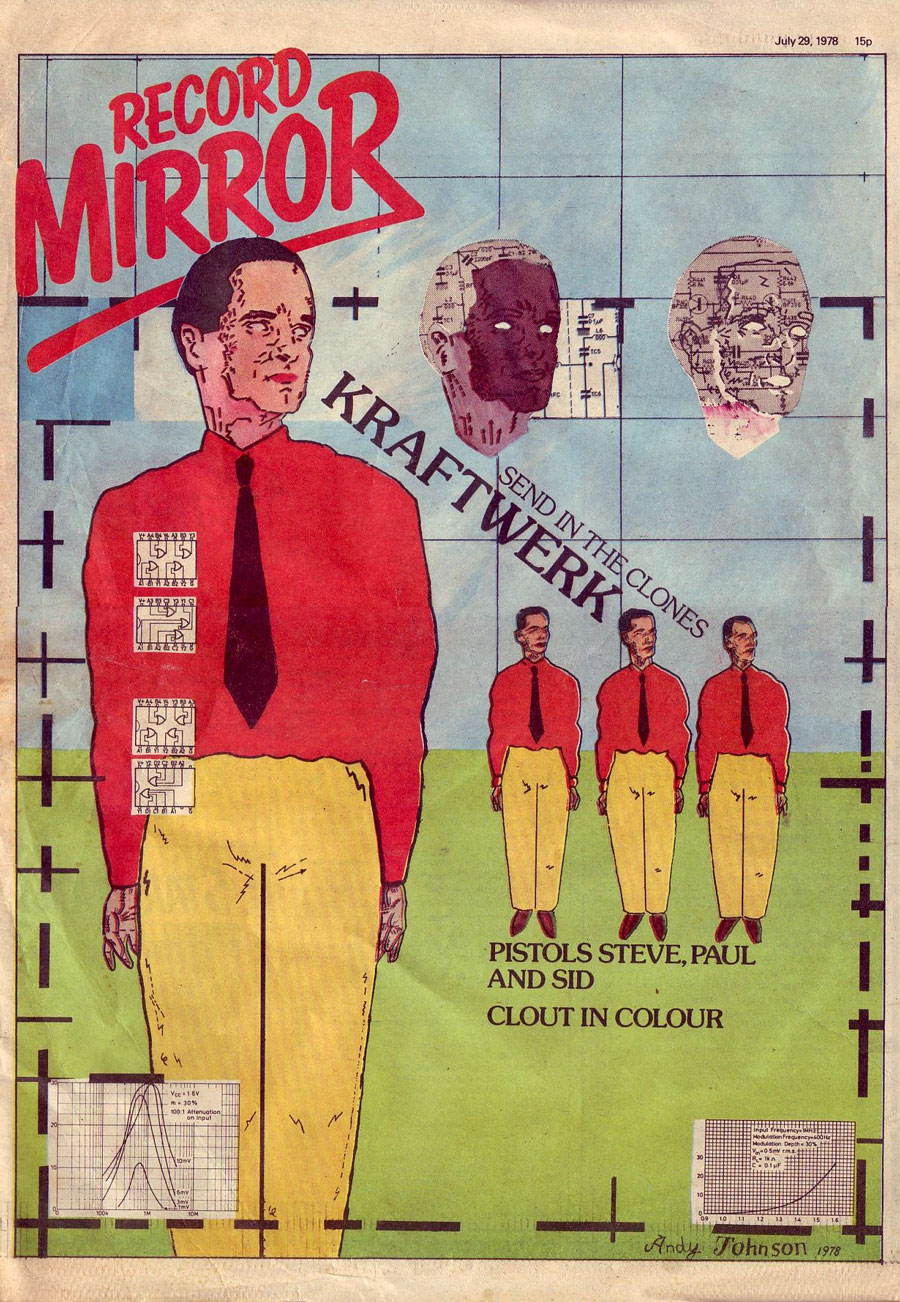
 I found this on the web recently – a Record Mirror cover from 1978 featuring Kraftwerk by Andy Johnson. Some may know Andy by his other pen name: Andy Dog, he’s also the brother of Matt Johnson (The The).
I found this on the web recently – a Record Mirror cover from 1978 featuring Kraftwerk by Andy Johnson. Some may know Andy by his other pen name: Andy Dog, he’s also the brother of Matt Johnson (The The).
He had this to say about it: “Blimey, what a find! Yes that is one of mine. For your information it was originally commissioned by (the now acknowledged literary expert and renowned author) Tim Lott and was completed with a certain technical difficulty (because the gouache paint kept bubbling instead of laying flat) in my tiny bedroom (shared with Matt) above the pub in Loughton where we lived at the time. I think I got paid about £95 for it. When it came out I was so pleased I walked into Hipgnosis on Denmark Street and showed it to Peter Christopherson and said “how about giving me a job?” He was v. polite but declined….”
 My favourite member of the group used to be Karl with his impish good looks and funky drumbeats, but over time I’ve come to appreciate Florian Schneider because of his mysteriousness and obvious sense of humour. Both he and Ralf Hutter have come across as cold and humourless in recent years because of the minimal interviews and stilted language used, all this stuff about ‘musical workers’ and the machines operating themselves. It wasn’t always so…
My favourite member of the group used to be Karl with his impish good looks and funky drumbeats, but over time I’ve come to appreciate Florian Schneider because of his mysteriousness and obvious sense of humour. Both he and Ralf Hutter have come across as cold and humourless in recent years because of the minimal interviews and stilted language used, all this stuff about ‘musical workers’ and the machines operating themselves. It wasn’t always so…
Check out this performance of ‘Pocket Calculator’ from Italian show Discoring in 1981. Aside from the Italian language version of the song (I think) check the little humorous interactions between Ralf and Karl on the left at 2.24 and 4.40. Best of all are the closing seconds as the presenter says goodbye, watch Florian on the right.
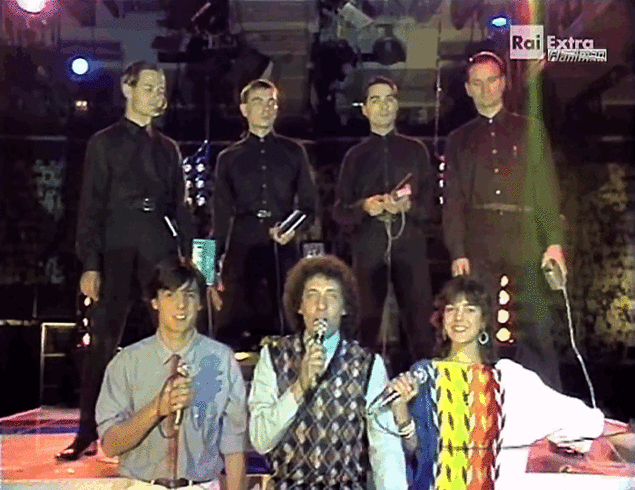 Did you see that? He made the rabbit ears sign behind the presenter’s head! You can see him getting ready too, he knows he going to do it and lines himself up for the moment.
Did you see that? He made the rabbit ears sign behind the presenter’s head! You can see him getting ready too, he knows he going to do it and lines himself up for the moment.
Another performance of the same song in New York yields more playful antics from Schneider too. Along with letting members of the audience press buttons on the calculator he mugs to camera, miming electronic letters ‘a’ and ‘o’ and pretends to be electrified when pressing the calculator.
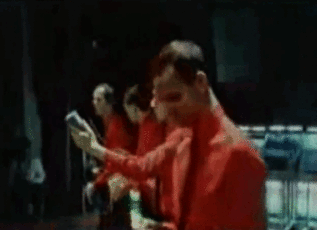
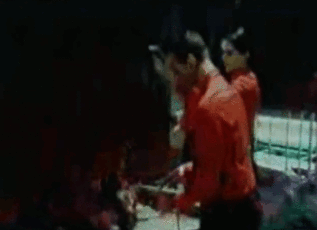
In Rio de Janeiro back in 1998 Florian endured this quick non-interview in which he’s clearly enjoying giving away as little as possible in order for it to be over with.
And who could forget the closing shot of their Tomorrows World performance of ‘Autobahn’?
But the prize goes to Ralf Hutter for his casual lyrical amendment to the last verse of ‘The Model’ at an Edinburgh soundcheck in 1991.
Click >>>The Model – Edinburgh soundcheck ’91

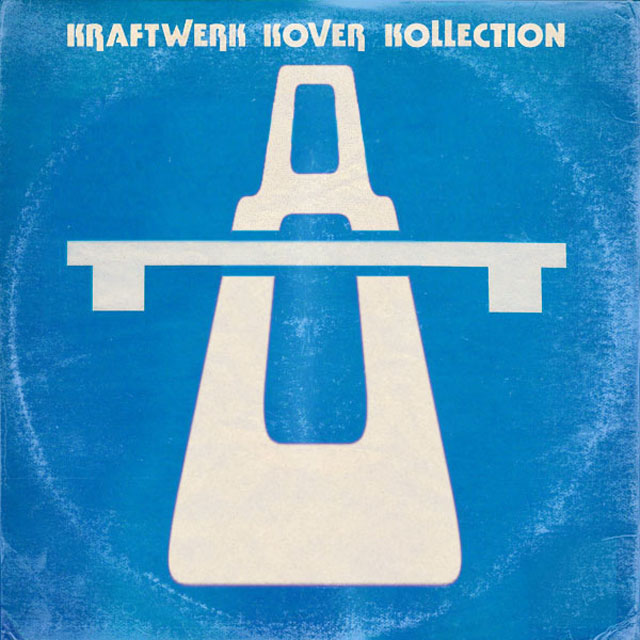 Volume 8 already (with enough saved for vol. 9 too)! This hour long mix has a bit of an angle over previous ones as I saved a lot of jazz, acoustic and piano versions for this and left out most of the electronic side.
Volume 8 already (with enough saved for vol. 9 too)! This hour long mix has a bit of an angle over previous ones as I saved a lot of jazz, acoustic and piano versions for this and left out most of the electronic side.
Save for some timely skits that comment on the ticketing fiascos surrounding recent gigs, most of the music here is more organic than synthetic but shows how easily adaptable the songs are across genres. A Bollywood version of ‘Man Machine’, ‘The Model’ played on church bells, sung by a choir and covered by comedian Adrian Edmondson are just some of the delights in this edition.
I probably say this every time but this is one of my favourite mixes, it was a bugger to put together but some of the versions are just incredible. ‘Neon Lights’ played on a music box, the jazz versions of ‘Spacelab’, ‘Man Machine’ and ‘The Telephone Call’ by Mensch Maschine and the insane piano version of ‘Electric Café’. Whilst adapting the cover art I did a number of designs and thought it would be fun to see what ‘retro’ and ‘updated’ versions would be like so here’s a Kover cover that conforms to ‘Der Katalog’ too.
This is the first collection of Augustine Kofie‘s work, self-published and available at his Keep Drafting site for $40 inc. Int. postage. You can see his art progress over a ten year period in just 62 full colour pages. What a body of work to behold so far too, his colour palette and sense of compositional balance is incredible as is his taste in texture and collage.
For me there is no other artist producing work of this calibre right now, I just wish I was richer and could afford some of his originals. This book is a steal at this price when you see some of the work contained within so it’ll have to do for now.
We arrive at the Tate Modern early, around 8pm, having rushed around the Light Show exhibition at the Hayward Gallery and then up the river in case the Tate’s ineptitude with the ticketing of this event is transposed to the entry system too. We needn’t have bothered, it barely looks like anything is happening, no lines down the block (not that there is a ‘block’ as such), no touts shuffling in the cold muttering, ‘anyone want Kraftwerk tickets?, tickets for Kraftwerk?’. None of this, we just walk in, get our wristbands and follow the smell of chips down to the bar to grab a drink. As more people start to arrive the pre-gig buzz starts, we spot ‘celebrities’ in the crowd, not X-Factor or film star celebs but legends of electronica past (Daniel Miller, Andy McCluskey and Paul Humphreys from OMD), the designer Peter Saville and journalist Paul Morley. One of the first people I recognise is my own accountant, who seems as shocked to see me there as I am him, and who then reveals that he saw them back in ’75 on the original ‘Autobahn’ tour at the Fairfield Halls (!) I knew he was the accountant for me but could never put my finger on why until now.
People are starting to file downstairs into the turbine hall so we follow, being given black cushions if we wish along the way and collecting our special Autobahn emblazoned 3D specs and info sheet on entry. The bottom end of the hall has been draped nearly to the ceiling, speakers run the length of both walls and the stage shows the four pixelated figures as a low electronic murmur emits all around us. People sit down, slightly bemused by the whole cushion thing and hall being a concert venue rather than the exhibition space they’re used to. A family sits behind us, father, mother and two sons, the youngest just ten years old, I ask him if he likes Kraftwerk and he hasn’t even heard any of their music yet but he loves art. The murmuring and the lighting dies, the robotic voice that introduced the gigs I saw in Dusseldorf three weeks back announces the band and we’re off into, errr… ‘The Robots’?
Hang on, we’re at ‘Autobahn’ aren’t we? Did anyone tell them this? Have they loaded the wrong set list? No, they haven’t, it’s fine, it serves as a perfect intro (no actual robots are on stage though) and then we’re into ‘Autobahn’ proper. It’s difficult to tell if they played it in full, time becomes elastic at a Kraftwerk gig, some songs that should be 5, 10 or 20 minutes zip by in what seems like a fraction of that time, others sometimes drag on too long (I’m thinking of the later material here). At the Man Machine show I thought they played ‘Autobahn’ for maybe seven or eight minutes, the next night at Computer World, it seemed to go over the 10 minute mark, the ‘Autobahn’ show definitely must have extended on that although I wasn’t exactly checking my watch to time any of it. The bass was phenomenal at times, vibrating through our bodies but never distorting, each sound crystal clear and all acoustic echo or reverb of the hall completely absent. One of the best 3D moments is during a short ‘interlude’ in the track where it breaks down into a short ‘radio’ section, the melody equalized as if playing through a transistor, and musical notes start to project from the car dashboard on screen. One of the staves floated, seemingly, out over our heads and drew the first gasps from the crowd as the projections did their work of distracting our attention from the four motionless figures concentrating on their ‘werk stations’.
‘Out of the Autobahn…’ and we’re on to side 2, something I never thought I’d ever hear live and was intrigued to know how they’d pull off. ‘Kometenmelodie 1’ was stompy, eerie and oppressive, visually represented by a slow moving comet moving across a star field and over in a matter of a minute or two. ‘Kometenmelodie 2′, the opposite, it’s soaring, mourning melody the nearest other point of reference to the direction the group would take on their next album, ‘Radio-Activity’. ‘Mitternacht’, a similarly slow, brooding accomplice to ‘Kometenmelodie 1′ in a lot of ways, was illustrated by a road with houses either side (?) before an artificial sunrise greeted a short but sweet ‘Morganspaziergang’. This was interesting because the absence of Florian Schneider can most be felt on this track, his flute – initially an integral part of the band sound but dispensed with forever on record after this point – is replaced by a light keyboard replication, presumably played by Ralf who seemed to be in charge of any melody lines being played throughout the gig. The artificial recreation of a morning walk in the country side, complete with electronic chirping birds and insects, mellow flute and light piano is the most out of place piece here but it’s still a joy to hear even if the image of four unsmiling, body-suited men presented in front of you is completely out of whack with the sounds you hear.
The album we’ve chosen to hear out of the way, it’s time to get to the meat of the event, the rest of the catalogue. Having seen this twice before there are no surprises although the selection is different and some visuals seem to have been improved or changed here and there. We go from ‘Radio-Activity’ to a crushing, rolling, metallic ‘Trans Europe Express’ (complete with the ‘meet Iggy Pop and David Bowie‘ line) but no ‘Showroom Dummies’ unfortunately. ‘The Man Machine’ gets a work out with only ‘Metropolis’ missing, ‘The Model’ predictably receiving the biggest cheer and the 3D in ‘Spacelab’ garnering more cheers. ‘Computer World’ is heavily plundered (but no ‘Pocket Calculator’ alas) with a great version of ‘Home Computer’ that really hasn’t aged at all in over 30 years. They ended the track quite suddenly and I was amazed to see Ralf and Henning Schmitz turn to one another, laughing, sharing a moment as if to say, ‘well you cocked that one up didn’t you?’
On to ‘Tour De France’ then, the original version sequenced into the newer one from ‘Tour De France Soundtracks’ and ‘Vitamin’ providing more amazing 3D visuals as bubbles and pills cascade out of the screen. After this things take a slight dip with ‘Expo 2000/ Planet of Visions’ a low point, a track derivative of much of the less-loved ‘Electric Café’ album and the first sign that the band were falling back to old ideas, even referencing how Techno had played its part in the past with its, ‘Detroit we’re so Electro’ line. Visually as well we’re into vector graphics and 8-bit computer type here and it looks dated in a way that the other album graphics don’t, not retro enough to have come back round a second time yet for a generation largely still pining for the degraded, warm feel of an Instagram image.
The designer in me can’t let go of some of the visual anomalies on screen too, jagged anti-aliasing around pictures, lined video footage that needs de-interlacing and low resolution jpeg artifacts in certain parts. Some of these are the bare basics of video and print work and make it look like they’ve used a work experience bod to execute some of the footage. It’s a minor, personal gripe but with the sound so pristine it’s a shame some of the vision is lacking. Back to ‘Boing, Boom, Tschak’ though and things start to pick up, the vector graphics are still there but we get the animated heads, created by Rebecca Allen which, at least, have a fuzzy VHS quality to them that’s just the right side of retro to feel appealing. I’m wondering if younger generations who discovered Kraftwerk in the 90’s will find their post-80’s graphics more appealing years down the line?
They finish with ‘Musique Non Stop’ and the beats are just incredible, the groove in that track is testament to the fact that a machine can funk. Play it to any narrow-minded jerk who gives you the tired, ‘it’s not as good as a real drummer is it?’, line and see them eat their words. This last track was one of the highlights for me because, as in the previous gigs, the players, one by one, take ‘a solo’ before they leave the stage. Each has 16 bars to play with the sound and get a little bit of the spotlight briefly before striding to the side, taking a bow and disappearing behind the curtain. Ralf is, of course, the last to leave and after his keyboard solo he gives a brief, ‘goodnight, auf wiedersehen, see you tomorrow’, and is gone, leaving the words ‘music non-stop’ reverberating around the room as the lights come up.
There is no encore, nor is there any call for one, there is little else to play and people know that, we were sated in our thirst to hear the Man Machine and this is really what the band has become now. Did we see ‘Kraftwerk’? Kind of but not really, we saw four men playing the music of the band, one of whom happened to have been an original member when most of these songs were written. But we didn’t really see ‘Kraftwerk’ as in you’re not seeing ‘The Beatles’ when you go and see McCartney doing ‘Hey Jude’. We saw what Kraftwerk wanted us to see, the sleek, airbrushed, we’re-ignoring-the-first-three-albums-because-they-don’t-fit-with-the-concept-Kraftwerk and that’s the difference between this mutated form of the group or seeing a tribute band perform these songs. Talking to Andy McCluskey from OMD before the gig brought up an interesting concept, he thought that even after Ralf retires or dies, the band will continue to tour, either with other human players or as their Robot counterparts. It may be that they invest in the same technology that brought ‘hologram Tupac‘ to Coachella last year but the band and their legacy will live on, why shouldn’t they tour? I think he may be right and if any band is going to do it it’ll be Kraftwerk, the men have laid the foundations, the machines can do all the werk from now on.
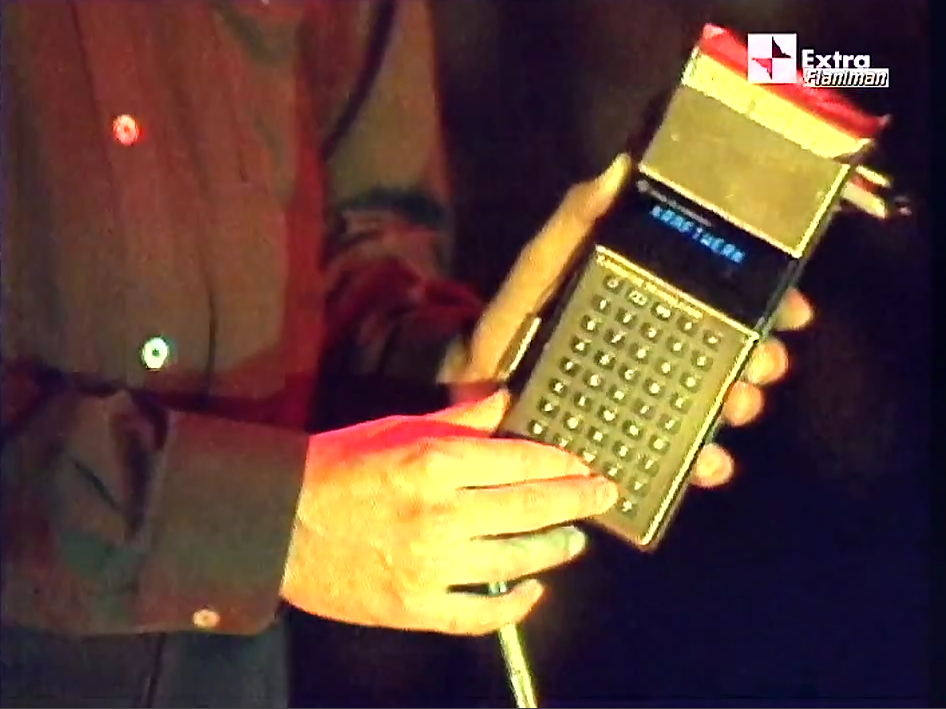
 Last month I was asked to write my thoughts about how Kraftwerk had influenced modern day DJ and Dance Music Culture by Jude Rogers for a piece for The Observer. I got a bit carried away and here’s an extended version of the full piece I submitted:
Last month I was asked to write my thoughts about how Kraftwerk had influenced modern day DJ and Dance Music Culture by Jude Rogers for a piece for The Observer. I got a bit carried away and here’s an extended version of the full piece I submitted:
Everyone knows Derrick May‘s proclamation that Techno was the fusion of ‘Kraftwerk and George Clinton meeting in an elevator’ but the band had a stake in the Hip Hop community many years before. As soon as Afrika Bambaataa and Arthur Baker took the beat from ‘Numbers’ and the melody from ‘Trans Europe Express’ to form the classic ‘Planet Rock’, Kraftwerk became part of the foundation of Hip Hop. Even before that, Grandmaster Flash would play ‘Trans Europe Express’ in it’s entirety in his infamous DJ sets, using its side-long length as one of his ‘bathroom break’ records.
No matter that the new wave and post punk groups had already claimed a stake with their synth and indie pop, the group became one of the building blocks of the Electro sounds coming out of New York, even more gleefully championed by the west coast who liked their tempos faster. That ‘Tour De France’ soundtracked the best scene in the film ‘Breakin’ shows how much their uptempo beats appealed to the crews back when breakdancing was as strong an element of the culture as the DJ and MC.
After this the band would be sampled endlessly, if not as obviously as ‘Planet Rock’. The group sued Bambaataa’s label, Tommy Boy, for thousands of dollars and Techno soon arrived, claiming its stake in the band. The 80’s generation that were inspired by Hip Hop and Techno to start DJing and beat making grew up to be the producers and ‘superstar DJs’ of today.
[youtube width=”640″ height=”380″]http://www.youtube.com/watch?v=4DE5iDd4iHA [/youtube]
Check the intro to ‘Leave Home’ by The Chemical Brothers for their clever appropriation of ‘Ohm Sweet Ohm’ from the ‘Radio-Activity’ LP or Jay-Z‘s backing track on ‘Sunshine’ for his take on ‘Man Machine‘. LCD Soundsystem‘s ‘Disco Infiltrator’ owes a big debt to ‘Home Computer’ and even Coldplay got in on the act by asking for permission to interpolate the melody of ‘Computer Love’ into ‘Talk’. In more contemporary dance scenes – hear dubstep producer 6Blocc’s cheeky reinterpretation of ‘Numbers/Computer World 2’ disguised under the title, ‘Digits’.
Across the pond Juke/Footstep producers like DJ Clent and Traxman have also been shoe-horning Kraftwerk samples into some of their songs, guess which track they sampled on ‘The Robot’?” Kraftwerk have been part of the lineage of dance music culture since the late 70’s, approaching it without them is like taking the ‘Apache’ break out of Hip Hop and the 808 drum machine out of Techno.
But it goes even further than that, the band lurk in some of the most unlikely corners outside of the music industry too, ingrained in people’s lives as much as any band like The Beatles or The Stones. Soda Jerk – a duo from Australia who make video cut ups and installations – have an on going project called ‘Astro Black’ which features the quartet amongst many heroes of black music. In their own words. “Astro Black is a multi-channel video cycle informed by cultural theories of Afrofuturism. Taking the cosmic jazz musician Sun Ra as a point of departure, this ongoing speculative history seeks to draw out the nexus of science fiction and social politics in Black Atlantic culture.” One excerpt called ‘We Are The Robots’ features Kraftwerk playing sequences from their own music in a jam session with the mothership from ‘Close Encounters of the Third Kind’ which responds with fragments of tracks that have sampled the group (!)
Astro Black Ep 0: We Are The Robots (Excerpt), 2010 from Soda_Jerk on Vimeo.
I’m frequently asked how I find all the various cover version in my Kover Kollection mixes (vol. 8 debuts tomorrow) but the truth is, once you start looking, they are everywhere, just not always in plain site. A quick web search for a title + ‘cover version’ is much like turning over a stone in a rock pool, teeming with life you can’t immediately see. Another example, I received a magazine by my friend Sarah Coleman just before Xmas, she had a feature on the back page about her favourite design classic – the 45 adaptor. Which record was the dink pushed into?
